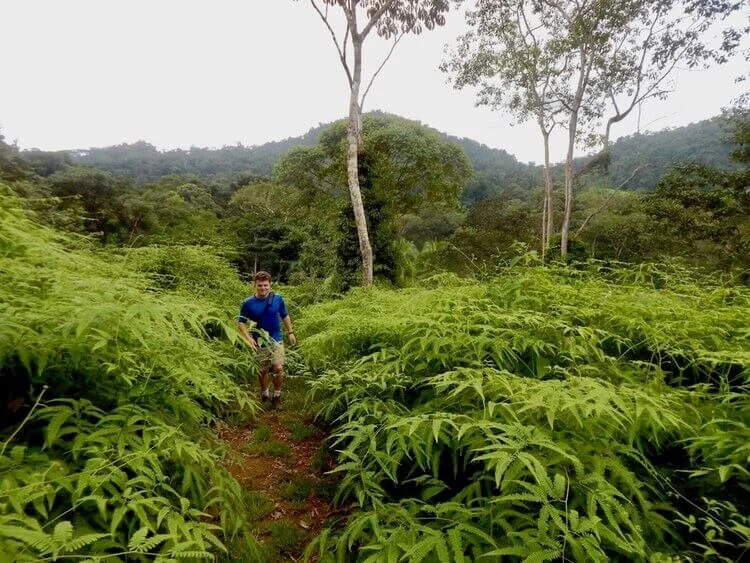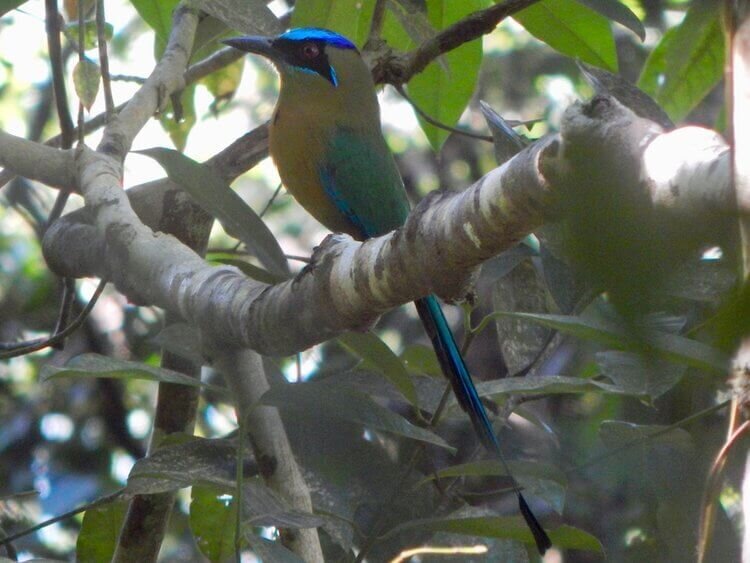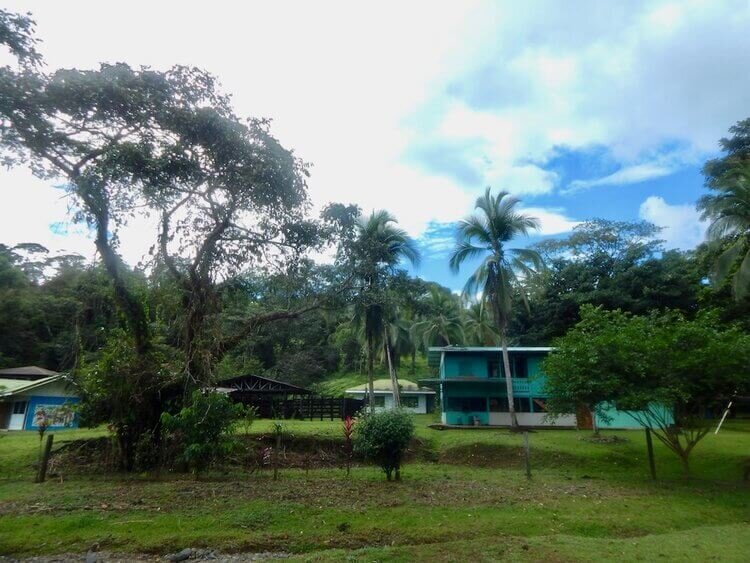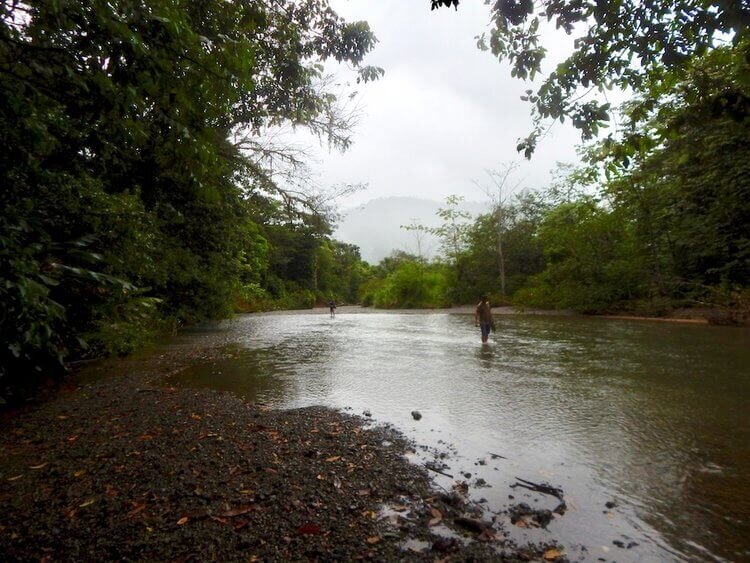Bienvenido a El Bonito
told by Jacob (Resident Biologists from the University of Cambridge)
At first glance the Retreat here seems only accessible by boat; yet for the determined, there do exist trails through the rainforest that connects the land with Golfito and the other little settlements nestled in the National Park. This includes El Bonito, the centre of operations for the National Park rangers. This was our chosen destination, and we set off one misty morning to seek it out.
The path began unassumingly, a small trail leading off from the dry riverbed that runs through the Retreat. However, it was not for the faint of heart: the gradient was so steep that a little clambering from time to time was necessary, although this didn’t seem to bother the skinks scurrying around the leaf litter. The laborious climb was worthwhile, as we found ourselves walking along a ridge high above the ocean, which was just visible as slivers of azure shimmering through the thick foliage.
It was not long before the trail began to descend again and soon broke out into a brightly lit valley, the sunlight reflecting off the verdant green ferns that festoon its slopes. Tiny blue berries grew low to the ground, and the odd rustle in the undergrowth betrayed the presence of a lizard or rodent scurrying away from our footsteps.
Enjoying a ferny valley
Blue-crowned motmot
A concerted leap prevented damp boots when a river crossed our path not long after. We then took a right turn at a T-junction onto a more established path, which wound its way through shady cacao plantations, before emerging onto a gorgeous river bank. A trunk spanning the river provided the perfect vantage point for watching capuchin monkeys clambering through the branches of the canopy.
Only a short distance later we came across a sign reading ‘Bienvenido a El Bonito’, much to our surprise, as we had expected to be hiking for several hours more at least! The site itself was beautifully tranquil. A large meadow was populated by nervous agoutis, strutting curassows and the occasional green iguana out for a stroll. A collection of simple buildings comprised the guards’ lodgings, dormitories for guests, and rooms for teaching. The sounds of chirruping squirrel monkeys and a woodpecker tapping at a hollow tree accompanied our lunch, as we settled down to wait for the guards to arrive: our only companion when we arrived was a solitary horse in a paddock.
El Bonito, the home of the park rangers
Male curassow displaying
Not long after we heard approaching hoofbeats, and two men on horseback came into view, the first rider leading another horse laden with great bunches of green bananas. They hailed a greeting and showed us round the dormitories once they had dismounted and fed the horses. Alberto was the elder, an experienced-looking guard dressed in khaki; Ronald was the younger, smiling perpetually and always willing to give help or advice. Night fell not long after, although the gibbous moon lent a bright milky light, supplemented by dozens of glimmering fireflies.
We woke at dawn the next day, and began with a swim in the river. The water was clear and shallow, and the stony riverbed speckled with duck-egg blue pebbles. Basilisk lizards scampered across the water’s surface, and blue morphos flitted over the sunlit banks. Thoroughly refreshed, we returned and had some food, before donning our hiking boots once more to explore the surrounding trails.
Wading along the river
Pale-billed woodpecker investigating a hollow
The higher altitude here meant that much of the vegetation was subtly different, creating a novel forest experience. Tracks of animals were peppered in patches of mud: the ubiquitous cloven hooves of peccaries, the pointed toes of agoutis, and even the humanoid prints of monkeys. Stick insects flew from tree to tree, easily spotted by their burgundy wings, but instantly invisible upon landing. Leafcutter ants were everywhere, efficiently stripping the heliconia plants to their bare stems, hurrying along neat highways through the leaf litter and even making use of fallen branches to cross streams, ferrying away their green cargo to the nest.
When we returned a larger group of student volunteers had arrived, changing the site from a place of solitude to a vibrant little community. We spent the evening playing cards, appreciating the rangers’ breath-taking wildlife photos, and learning some Costa Rican dance moves – an energetic end to the day!
The following morning, we set off early for the return leg, thanking the rangers for their hospitality. This time we visited the ceiba en route: a tree of gargantuan proportions, its girth the size of a small house; in fact, the indigenous people once used the buttress roots as the supports for their dwellings. Further on, once we had crossed the river and the fern-filled valley, we began to see a plethora of wildlife: a pair of slaty-tailed trogons, the elusive blue-crowned motmot (obligingly calling ‘mot-mot’ to herald our passing), and a lone howler monkey resting in the boughs of a tree. By the time we arrived back we were inevitably tired, muddy and hungry, but exhilarated by our time deep in the forest with those that care for it the most.






